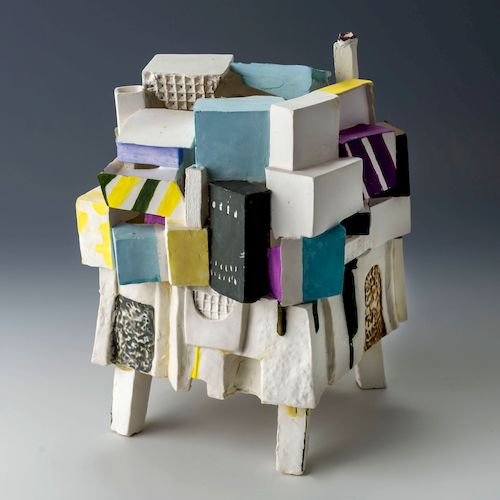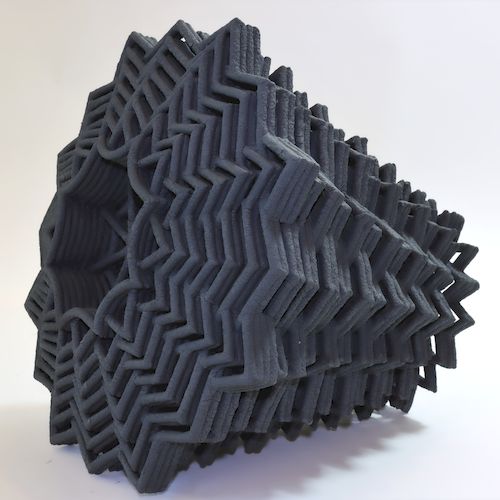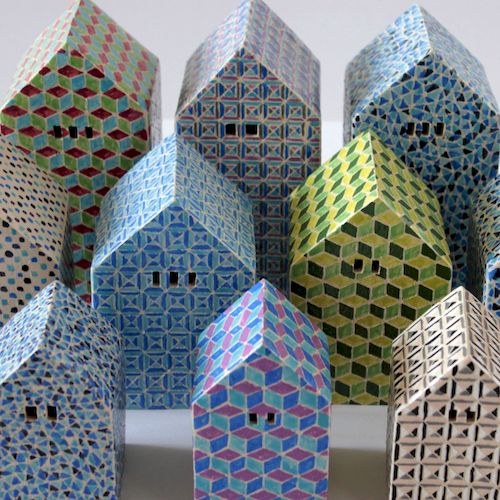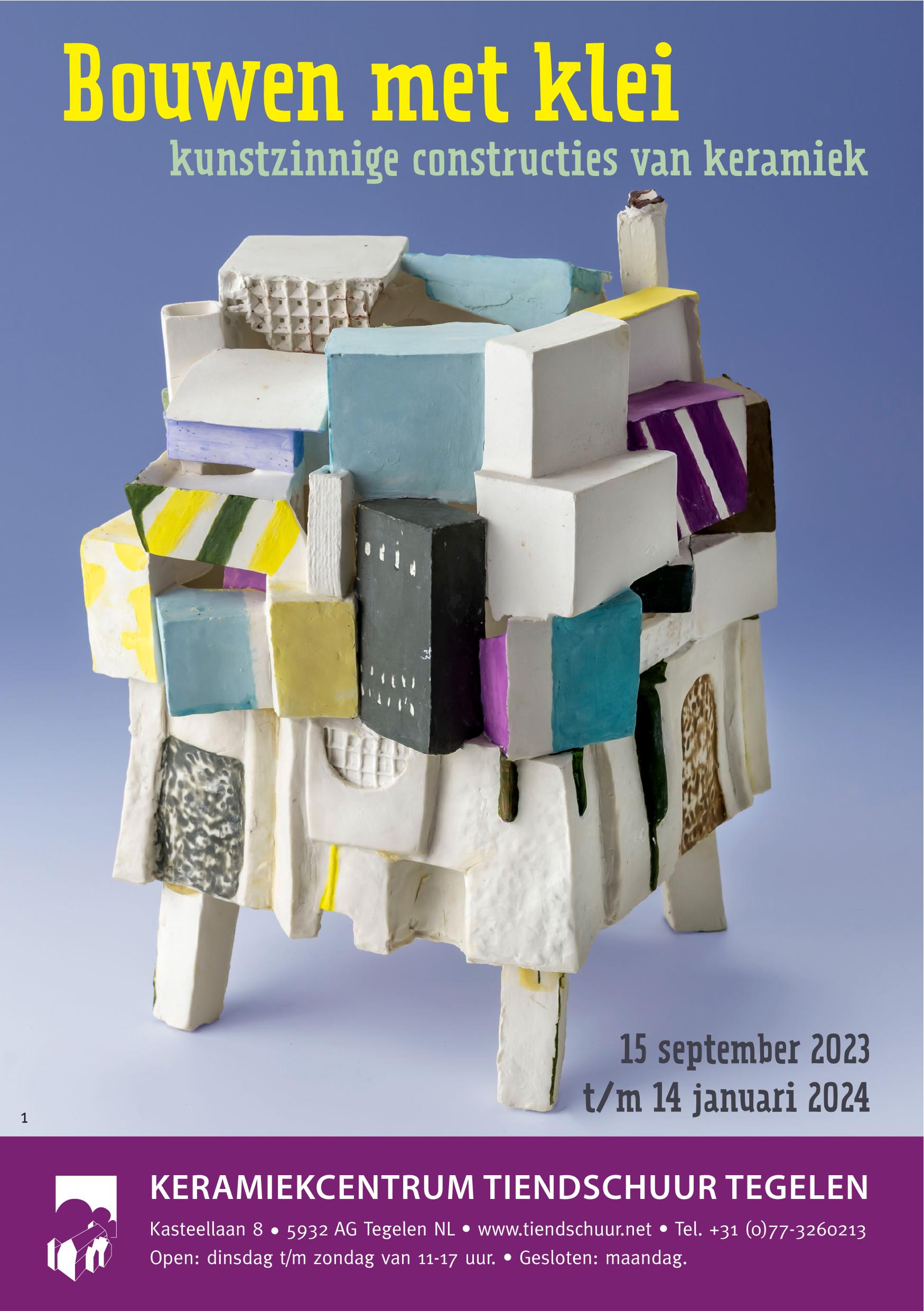
Where would we be without clay?
Beautifully built artworks show utility and beauty of ceramics
from 15 September 2023 up to and including 14 January 2024
Anyone that looks around themselves very well for only just a moment, is likely to see quickly an object made of ceramics. The coffee cup, the breakfast plate, the washbasin, the toilet-bowl, the tiles on the wall and floor, the bricks in the wall, even the tiles on the roof. In addition to useful things, clay is also used to make works of art. The exhibition ”Building with clay” shows ceramic art from home and abroad. All artists ‘build’ their works and/or refer to architecture. The occasion for the exhibition is the 250th anniversary of the Tegelen roof tile industry. This exhibition pays tribute to clay as a building material.
The first Houba & Kamp roof tiles factory started in Tegelen in 1773. Many were to follow later. Since that time, glazed stoneware pipes, toilet-bowls, bricks, flower pots and coarse kitchen ceramics were also made here on a large scale. 65% of all Dutch roof tiles are still being produced in Tegelen. This exhibition dwells upon this history and is the occasion for it. The exhibition shows contemporary ceramic art made by renowned artists. They are all inspired by this theme, each in a unique way. One literally builds with clay, another makes stacks or architectonic objects. Through their beautiful works of art, they pay tribute to building with ceramics and show that clay as a material is invaluable.
Pálma Babos, from Hungary, builds fragile architectonic porcelain structure. They remind one of work by Jan Schoonhoven, but now carried out in ceramics and quite a lot more dynamic. It looks as if her work is coming alive, it moves, it bends and wrings and tries to break free from the tight arrangement.
Zsófia Karsai is also Hungarian. Her work differs greatly from her fellow-countrywoman’s. She focuses on the building blocks. With the patience of a saint, small stones and clay slip, she builds her sculptures, resulting in beautiful, carefully constructed objects.
Marga Boogaard’s works are very refined, too. With carefully stacked small clay roles she builds complex and tight geometric structures. Her work refers to both the building and the mathematical basis of architecture.
This approach is also to be found in the work of Spanish Myriam Jiménez Huertas. Where Boogaard focuses more on the frame-work, the internal structures, Jiménez-Huertas focuses more on the finishing touches: the outer shell of buildings and their finishing with sheets, boards and bricks. The result: taut objects in which a beautiful play with lines, light and shadow can be seen.
Jutta Widmer (DE) also works with the outside of buildings. Unlike her colleagues, she makes complete one piece façades. The walls of her constructions look like rusty iron, but it really is wafer-thin perforated porcelain.
Apart from Widmer, there are four more German exhibitors. The second German is Cathy Fleckstein. She zooms in on building and working in layers. Her work literally consists of small elements and refers to the ‘brick-on-edge’ coping in masonry or to the composition of the soil. Her wall panels strongly look like a cross section of our soil, complete with valuable clay layers.
The third German ceramicist is Karin Putsch-Grassi. She lives and works in Italy. She is the only one in this exhibition with the potter’s wheel at the basis of her sculptures. With small, still soft, turned shapes, she builds her small angular geometric objects.
Renée Reichenbach is the fourth German. This renowned ceramicist also constructs her objects with small elements. She builds the walls of her objects with different clay types. She usually cuts geometric shapes from them and puts them together to form sheets. She uses these sheets to build dynamic shapes.
The fifth German is Elisabeth Schaffer. What occupies her chiefly is the theme ‘buildings’. Her objects are stylised little houses and towns, gathered together on rocks or mountains. Other works are more towns on stilts.
Recognisable little houses are also to be found in the work from Dutch Carla Dijk. She zooms in on the basic form of a house. A block with a point on it, which she then provides with a beautiful skin, constructed from variegated geometric patterns.
Also a basic form of building, but then in the sense of building blocks, can be found in the work by the Belgian artist Jean-Claude Legrand. He makes life-size stacks and tough, robust sculptures. For these, he works with hand-formed bricks, which he gives a weathered appearance.
Valda Podkalne from Latvia also makes robust sculptures. Wild stacks of geometric shapes with beautiful skins, reminding one of destroyed buildings. The sad but also beautiful remains of buildings after a bombing, earthquake, flood or simply lack of occupancy for many years.
As time goes by, all buildings will fall into disrepair, disintegrate (if they are not demolished) and decay to brick dust, which, in turn, will be carried along by rivers and ultimately sink into the clay layers. After which the whole process can start all over again. Although there has been an enormous increase in technological developments in the last 250 years, clay is still an indispensable raw material for many products that we use on a daily basis. In a world without clay, we would have to make do with plastic or concrete. Both practically and aesthetically, it is impossible to imagine life without ceramics. All the more reason to pay tribute to this versatile, sustainable and especially beautiful building material.
Opening
Friday 15 September 2023, 16:00. The exhibition will be introduced by conservator Sacha Odenhoven.
Artists
Pálma Babos (HU); Marga Boogaard (NL); Carla Dijk (NL); Cathy Fleckstein (DE); Myriam Jiménez Huertas (ES); Zsófia Karsai (HU); Jean-Claude Legrand (BE); Valda Podkalne (LV); Karin Putsch-Grassi (DE); Renée Reichenbach (DE); Elisabeth Schaffer (DE); Jutta Widmer (DE).
The artists below will be present in person at the museum for a lecture or demonstration:
- 5 November 2023 | 14-16 h, Marga Boogaard
- 14 Januar 2024 | 14-16 h, Carla Dijk
Please book the presentations in advance.
For more info: check: www.tiendschuur.net, or ask Sacha Odenhoven - conservator / manager - (info@tiendschuur.net or 077-3260213).
